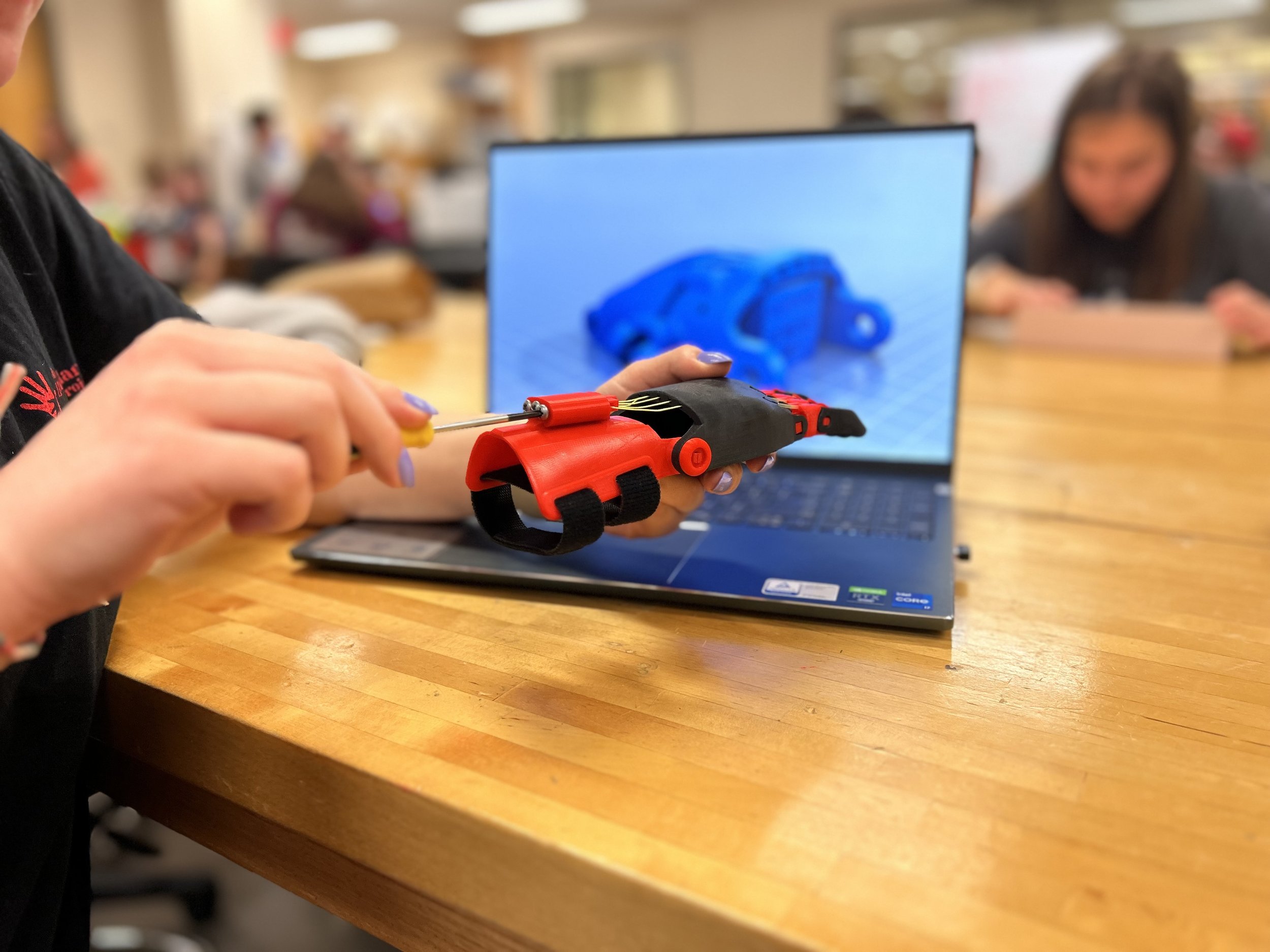
Lend a Hand to Give a Hand
Our Mission
Use 3D printing and innovative design solutions to provide recreational prosthetic devices to people with upper limb differences, while providing a supportive community.
How to Receive Service
To receive service fill out the form linked below. This form has 3 parts which helps us to best meet your needs. The first part of the form is to join our email list and stay up to date about the latest information from our organization. The second part is for those who are a member (includes parents/guardians of children) of the upper limb difference community and wish to join our support network and physical mailing list. The third part of the form is to request a recreational prosthetic designed to meet the user’s needs. Also please note that devices are at no cost to the families that receive them.
Our Process
Discovery
Most families learn about The Helping Hand Project at NC State University through web searches, social media, news stories, alumni publications, and word of mouth. We welcome people to fill out the form above and to email us (helpinghand.club.ncsu@gmail.com) for any other questions or for more information!
Measurements
The measurement section of the form can either be filled out online or families can come to NC State to get accurate measurements of the their limbs and the ways in which they use their limbs. When taking measurements, our team gets to know the child and family. We put an emphasis on the child’s interests and personality to make the process fun for the kids.
Designing
Once measurements are taken we begin designing the hand in a 3D CAD program called Onshape. When designing the hands we take into consideration the aspects of the measurement process and the child’s interest. The designs we customize are taken from e-NABLE the Future, a global network of volunteers that post open source, hand designs for anybody to use.
When printing the hand, the child chooses the color and the case design team chooses the material that is best suited. If we want a more flexible hand, we use TPU NinjaFlex filament in the print, but if we want a sturdier hand, we choose PLA plastic. Then, we print the hand with our BCN3D Sigma Dual-Extrusion 3D Printer over the next ~12-18 hours, using the given specifications.
Assembly
Teams follow the protocol provided with the hand designs to assemble the various parts of the hands. While the majority of the hand is 3D printed, other materials might be used to ensure that the hand functions properly. Some of these materials include screws to hold line tensioners in place, fishing line to provide tension on the fingers and produce the movement of the hand, and dental rubber bands to keep the fingers elongated when not in use.
Delivery
Throughout the year we send care packages to the families in our network so that they can see the progress of their device and know that we care deeply about them. Once the hand is assembled and tested, it is delivered to the child. We hope that each child gets a boost in their self-confidence upon receiving their device and they feel empowered and celebrate their uniqueness. We wish that families continue to connect with us through email or at our social events.







